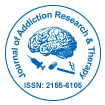Unsere Gruppe organisiert über 3000 globale Konferenzreihen Jährliche Veranstaltungen in den USA, Europa und anderen Ländern. Asien mit Unterstützung von 1000 weiteren wissenschaftlichen Gesellschaften und veröffentlicht über 700 Open Access Zeitschriften, die über 50.000 bedeutende Persönlichkeiten und renommierte Wissenschaftler als Redaktionsmitglieder enthalten.
Open-Access-Zeitschriften gewinnen mehr Leser und Zitierungen
700 Zeitschriften und 15.000.000 Leser Jede Zeitschrift erhält mehr als 25.000 Leser
Indiziert in
- CAS-Quellenindex (CASSI)
- Index Copernicus
- Google Scholar
- Sherpa Romeo
- Öffnen Sie das J-Tor
- Genamics JournalSeek
- Akademische Schlüssel
- JournalTOCs
- SafetyLit
- Nationale Wissensinfrastruktur Chinas (CNKI)
- Elektronische Zeitschriftenbibliothek
- RefSeek
- Hamdard-Universität
- EBSCO AZ
- OCLC – WorldCat
- SWB Online-Katalog
- Virtuelle Bibliothek für Biologie (vifabio)
- Publons
- Genfer Stiftung für medizinische Ausbildung und Forschung
- Euro-Pub
- ICMJE
Nützliche Links
Open-Access-Zeitschriften
Teile diese Seite
Abstrakt
Illicit and Prescription Opiate Dependence: The Impact of Axis II Psychiatric Comorbidity on Detoxification Outcome
Sarah Coupland, Ronald Fraser, Jorge Palacios-Boix, Dara A Charney, Juan-Carlos Negrete and Kathryn J Gill
Objective: The current study examined the predictors of inpatient detoxification failure among illicit and prescription opiate dependent patients. Outcomes for the treatment of opiate dependence were compared to those with sedativehypnotic dependence.
Methods: Data from 203 consecutive detoxification admissions included results of urine toxicology screens, length of stay, and outcomes. All detoxification protocols were designed to manage withdrawal throughout the tapering process and medical/psychiatric monitoring was provided daily.
Results: Opiate-dependent patients were significantly less likely to complete detoxification and more likely to dropout against medical advice or to be discharged for non-compliance compared to sedative-hypnotic dependent patients. Those with opiate dependence were also more likely to be polysubstance abusers, and to report that they suffered some form of chronic pain syndrome (e.g. fibromyalgia) compared to the non-opiate group. Additionally, a large percentage of the sample was diagnosed with a personality disorder (PD), primarily Cluster B PD. There was considerable overlapping comorbidity between PD, pain syndromes and opiate abuse; 31.6% of the opiate-dependent patients suffered from both a chronic pain condition and a PD compared to 4.0% of the non-opiate patients. A hierarchical logistic regression revealed that treatment failure was predicted by three significant variables – younger age, opiate dependence and the presence of a Cluster B personality disorder. Illicit opiate (IO) users differed significantly from prescription opiate (PO) users in that they were significantly younger at first use of opiates and at the time of detoxification. Time between first use and detoxification admission did not significantly differ between the groups and rates of detoxification completion were comparable.
Conclusions: Overall, these findings suggest a complex interaction between opiate dependence, pain syndromes, and affective dysregulation, which may lead to early termination from treatment.Further understanding of treatment failure may lead to specific, targeted interventions for thisdifficult to treat population.
Zeitschriften nach Themen
- Allgemeine Wissenschaft
- Biochemie
- Chemie
- Genetik und Molekularbiologie
- Geologie und Geowissenschaften
- Immunologie und Mikrobiologie
- Klinische Wissenschaften
- Krankenpflege und Gesundheitsfürsorge
- Landwirtschaft und Aquakultur
- Lebensmittel & Ernährung
- Maschinenbau
- Materialwissenschaften
- Medizinische Wissenschaften
- Pharmazeutische Wissenschaften
- Physik
- Sozial- und Politikwissenschaften
- Umweltwissenschaften
- Veterinärwissenschaften
Klinische und medizinische Fachzeitschriften
- Anästhesiologie
- Augenheilkunde
- Betrieb
- Dermatologie
- Diabetes und Endokrinologie
- Gastroenterologie
- Genetik
- Gesundheitspflege
- Immunologie
- Infektionskrankheiten
- Kardiologie
- Klinische Forschung
- Medizin
- Mikrobiologie
- Molekularbiologie
- Neurologie
- Onkologie
- Pädiatrie
- Pathologie
- Pflege
- Toxikologie
- Zahnheilkunde

 English
English  Spanish
Spanish  Chinese
Chinese  Russian
Russian  French
French  Japanese
Japanese  Portuguese
Portuguese  Hindi
Hindi